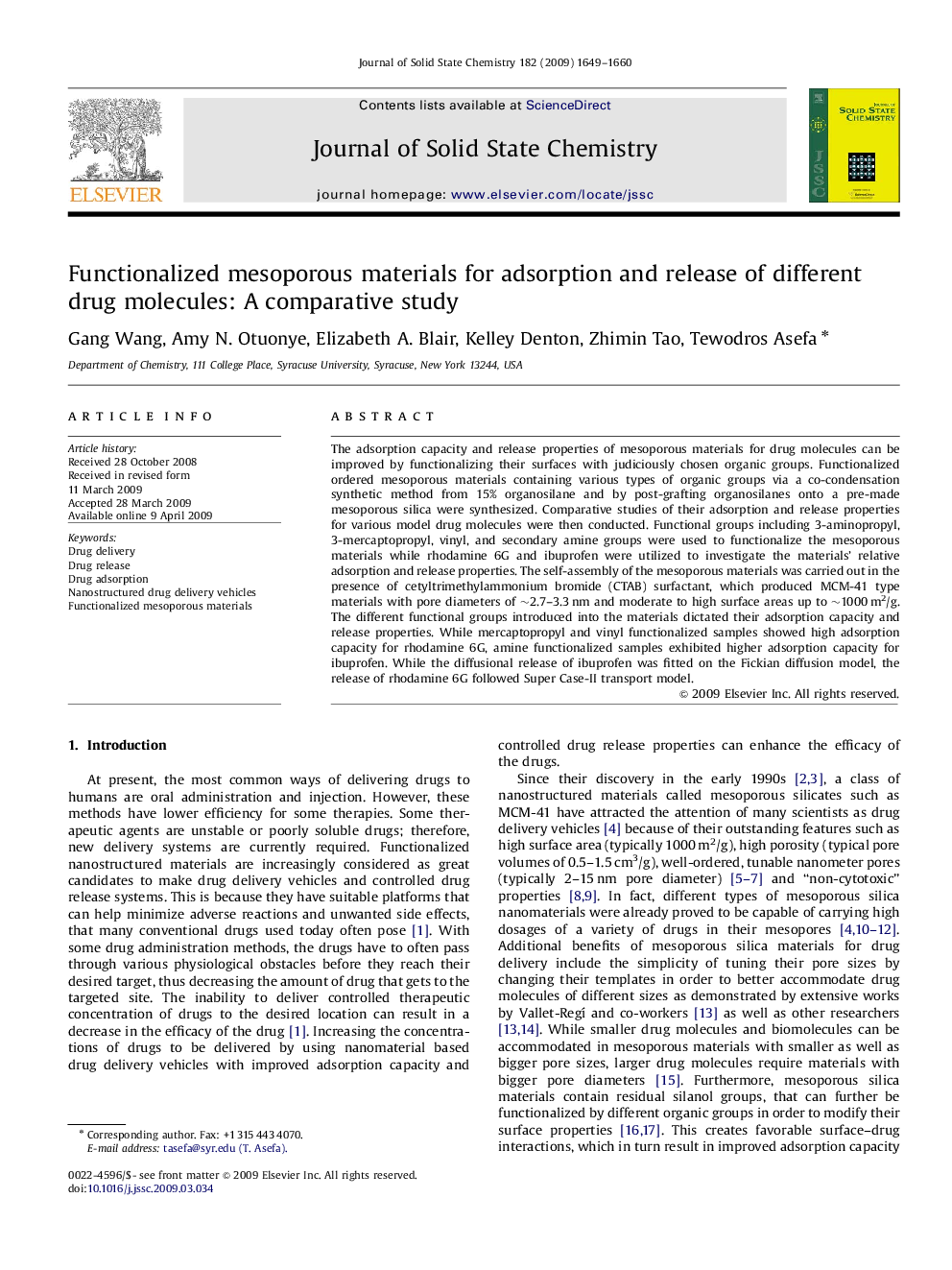| Article ID | Journal | Published Year | Pages | File Type |
|---|---|---|---|---|
| 1329227 | Journal of Solid State Chemistry | 2009 | 12 Pages |
The adsorption capacity and release properties of mesoporous materials for drug molecules can be improved by functionalizing their surfaces with judiciously chosen organic groups. Functionalized ordered mesoporous materials containing various types of organic groups via a co-condensation synthetic method from 15% organosilane and by post-grafting organosilanes onto a pre-made mesoporous silica were synthesized. Comparative studies of their adsorption and release properties for various model drug molecules were then conducted. Functional groups including 3-aminopropyl, 3-mercaptopropyl, vinyl, and secondary amine groups were used to functionalize the mesoporous materials while rhodamine 6G and ibuprofen were utilized to investigate the materials’ relative adsorption and release properties. The self-assembly of the mesoporous materials was carried out in the presence of cetyltrimethylammonium bromide (CTAB) surfactant, which produced MCM-41 type materials with pore diameters of ∼2.7–3.3 nm and moderate to high surface areas up to ∼1000 m2/g. The different functional groups introduced into the materials dictated their adsorption capacity and release properties. While mercaptopropyl and vinyl functionalized samples showed high adsorption capacity for rhodamine 6G, amine functionalized samples exhibited higher adsorption capacity for ibuprofen. While the diffusional release of ibuprofen was fitted on the Fickian diffusion model, the release of rhodamine 6G followed Super Case-II transport model.
Graphical abstractThe adsorption capacity and release properties of mesoporous materials for various drug molecules are tuned by functionalizing the surfaces of the materials with judiciously chosen organic groups. This work reports comparative studies of the adsorption and release properties of functionalized ordered mesoporous materials containing different hydrophobic and hydrophilic groups that are synthesized via a co-condensation and post-grafting methods for various model drug molecules.Figure optionsDownload full-size imageDownload as PowerPoint slide
